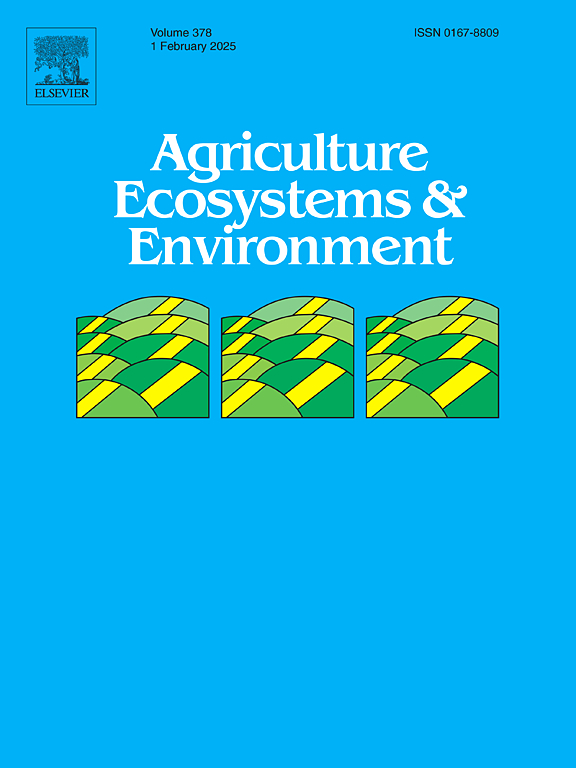Optimal nitrogen distribution in maize canopy can synergistically improve maize yield and nitrogen utilization efficiency while reduce environmental risks
IF 6
1区 农林科学
Q1 AGRICULTURE, MULTIDISCIPLINARY
引用次数: 0
Abstract
Under the premise of 0 increase in nitrogen input and environmental friendliness, optimizing planting density to improve canopy nitrogen distribution is conducive to balancing the contradiction between resource consumption and yield increase, and promoting a cleaner production model of high yield and high efficiency in maize. We studied the effects of nitrogen application on grain yield, grain nitrogen concentration, grain protein concentration, nitrogen utilization efficiency, and vegetative organ nitrogen uptake, distribution, remobilization, economic returns and environmental benefit of two high-yielding maize hybrids under different planting densities (7.5 ×104 plant ha−1 and 12.0 × 104 plant ha−1) and nitrogen applications (0, 180, 360, and 540 kg N ha−1) during 2019–2020. The results showed that the maize yield, grain nitrogen concentration and grain protein concentration reached the maximum of 22.7 t ha−1, 1.9 %, 12.7 % corresponding to planting density of 12.0 × 104 plant ha−1 and nitrogen application of 360 kg ha−1. The economic returns were also maximized which was 5.4 × 103 USD ha−1. Nitrogen utilization efficiency decreased with increasing nitrogen application, while increased with increasing planting density. The nitrogen accumulation and remobilization of plants had a positive response to nitrogen application and planting density. Higher yields were obtained due to higher vegetative organs of pre-silking nitrogen accumulation and stalk nitrogen remobilization and high nitrogen accumulation in the middle leaf. Under this high-yielding condition, both reactive nitrogen losses and greenhouse gas emissions of the optimal combination were 6.1 % lower than the low-yielding combination. Therefore, under high planting density, selecting suitable hybrids, defining the appropriate nitrogen application and optimizing nitrogen distribution in maize canopy can achieve high-yield and efficient production of maize while reduce environmental risks. This study highlights the importance of optimizing canopy nitrogen distribution in maize, and likewise provides new insights into mitigating the negative environmental effects of agricultural production.
求助全文
约1分钟内获得全文
求助全文
来源期刊

Agriculture, Ecosystems & Environment
环境科学-环境科学
CiteScore
11.70
自引率
9.10%
发文量
392
审稿时长
26 days
期刊介绍:
Agriculture, Ecosystems and Environment publishes scientific articles dealing with the interface between agroecosystems and the natural environment, specifically how agriculture influences the environment and how changes in that environment impact agroecosystems. Preference is given to papers from experimental and observational research at the field, system or landscape level, from studies that enhance our understanding of processes using data-based biophysical modelling, and papers that bridge scientific disciplines and integrate knowledge. All papers should be placed in an international or wide comparative context.
 求助内容:
求助内容: 应助结果提醒方式:
应助结果提醒方式:


